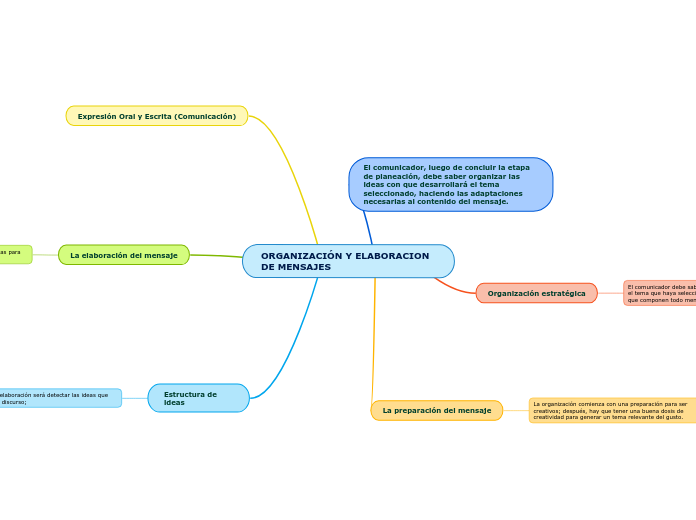TIPOS DE DINAMICA
To name your story, you have to think about the overall message and what you want your audience to understand from the story. Also, make it relevant and easy to remember.
7-.Las tecnicas en DG
hay diferentes dinamicas
de presentación, cohesión, conocimiento, divisorias, comunicación, confianza, creatividad, distención, cooperación, animación y calentamiento grupal, resolución de conflictos, evaluación y roles.
6.1 Reparto de tareas
igualdad
igualdad de oportunidades para participar en actividades que te gustan
espontaneidad
libertad de elección
rotacíón
repartir tareas en el tiempo y pasan por diferentes responsabilidades
uniformidad
repartir carga de responsabilidades
idoneidad
realizar evaluación previa
6-.Reparto de tareas
hay diferentes tareas
formación de subgrupos dento del grupo
diferentes intereses de los componentes del grupo
diferente condición física en los componentes del grupo
5-.Organización del grupo
hay dos tipos
argumento físico
en función del trabajo que van a realizar puede ser: individual, parejas o tríos, grupos pequeños, grandes o completos.
distribución espacial
lugar físico donde los componentes del grupo van a ocupar, unos ejemplos són: libre, en fila, círculo, en escuadra, con arregla a la modalidad deportiva y en áreas.
4-.A tener en cuenta en la DG
trabajo voluntario
tomar consciencia a su grupo
atmósfera cordial y democrática
el objetivo debe ser claro y bien definido
participación activa de todos los miembros
actitud cooperante
se debe seguir el procedimiento indicado
se debe conocer las posibilidades y los riesgos
3.1 Elección de la DG
según
las caracteristicas del medio externo
clima de aceptación
la capacidad del animador
tecnicas más comunes (discusión)
las caracteristicas de los miembros
edad,experiencias...
el ambiente fisico
espacio,material...
3-.Elección de la DG
The ending of a story is essential. We all know that if the ending is weak, what happened before loses its importance. So make it unpredictable, but fair. A resolved ending answers all the questions and ties up any loose threads from the plot.
tamaño
cuando mas pequeño sea más cohesión habra
madurez y entrenamiento del grupo
This is the closure section of the story.
See examples of possible outcomes below:
- all problems have been solved
- it's clear how each one of your characters ends up
- your main character is transformed by the challenge
poco complejas cuando empieza un grupo nuevo
Try answering these questions to come up with a closure:
- Have all the problems been solved?
- Is there a clear picture of what happens with each character in the story?
- Has the challenge transformed your main character?
- How do the characters feel in the end?
objetivos
This is the moment when the main character surpasses the last obstacle and finally faces their greatest challenge.
The climax usually follows one of these patterns:
- realization
- resolution
- choice
Type in your answer.
ideas,tomar decisiones...
1-.Definición
The middle of the story is where you add layers of complications that will lead to the end. Reveal more about the character's journey. Did their personality go through changes? How did they overcome the challenges? And as you build up the story’s central conflict, make it more personal to that character. Also, from the middle act, you have to lead into the final act.
2-.Importancia de la DG
There wouldn't be any tension and excitement in your story if there weren't any obstacles in your character's way.
tienen una dinámica por cada grupo que sea apropiada para ellos
desarollar diferentes dinámicas en grupo
A story is nothing more than a character overcoming a series of difficulties to reach the desired goal. Obstacles usually create suspense and conflict. In overcoming obstacles, there is growth: weak becomes strong; hatred turns into love; sadness into happiness; wrong into right; lies into truth; or evil becomes good.
See a few examples below:
- stopping a meteor
- finding a killer
- finding love
Obstacles
La DG se ocupa de
Your character(s) need(s) motivation in order to solve the challenge(s).
sirven para
Secondary characters might also have motives that lead them to cross paths with the main character or which might trigger them to help the main character.
desarollar su eficacia para finalmente alcanzar sus objetivos
hay 4 diferentes ocupaciones
Why does your character need to confront this challenge? What does he/she expect to accomplish by solving it?
See a few examples:
- will marry in 3 days
- can fix the mistakes of the past
resolución de conflictos
fomentar la creatividad
fomentar la participación
comunicación de los componentes del grupo
hay dos grupos:
Each story has a main character and that character usually needs to solve a problem or challenge. The character's challenge is the one that creates tension throughout the story.
grupos
Type in any other challenges which other characters in the story need to face.
conjunto de personas que interactúan entre ellos
dinámica de grupos
In most stories, there are 3 challenges. The number 3 is a mystical number symbolizing completeness. Try to come up with interesting challenges with which your character needs to struggle.
See a few examples below:
- turns into a werewolf at night
- is sent back in time
tratamiento de relaciones interpersonales de los humanonos










